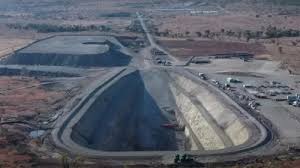Zimbabwe’s Kuvimba Mining House has announced a new approach to developing its long-delayed Darwendale platinum project, opting for an open pit mine instead of the previously planned underground operation. This change, according to Kuvimba’s Chief Executive Officer, Trevor Barnard, will help speed up the project, especially as global platinum prices experience a sharp rise.
The Darwendale project, located about 65 kilometres west of Harare, was first launched in September 2014 during the tenure of former President Robert Mugabe. The project was also graced by Russia’s Foreign Affairs Minister Sergey Lavrov, signifying a major collaboration between Zimbabwe and Russia at the time. Initially, the mine was designed to be an underground operation requiring about $450 million for the first phase of development. If completed as planned, it was expected to be Zimbabwe’s largest mining venture.
However, the project faced a major setback in 2022 when Kuvimba’s Russian joint venture partner pulled out, citing uncertainties and a steep drop in the prices of platinum group metals (PGMs). The metals, commonly used in automotive catalytic converters to reduce harmful vehicle emissions, suffered significant price declines, rendering many mining projects unprofitable.
Barnard explained that Kuvimba had abandoned the “big bang approach” due to the difficulty of raising $450 million for a platinum mining project in Zimbabwe’s current economic environment. Instead, the company will proceed with a scaled-down open pit operation at an initial cost of $50 million. “That is quite a change in scope and phasing,” Barnard said. “It’s very difficult to raise $450 million specifically for a platinum project and in Zimbabwe.”
To finance the project, Kuvimba will draw funding from its parent company, Mutapa, which is Zimbabwe’s sovereign wealth fund. The company will also rely on internally generated cash from its other mining activities and may seek some debt financing to supplement the required capital.
Kuvimba Mining is a diversified mining company with interests in gold production. The company’s three operational gold mines collectively produced 116,000 ounces of gold in 2024. This gold output provides the company with a steady stream of revenue, which it plans to leverage to support the platinum project.
Market analysts have pointed out that the recent surge in platinum prices could reignite several mining projects that were suspended when prices fell. A rise in Chinese imports and a reduction in supply from South Africa, the world’s largest platinum producer, have contributed to the rally in platinum prices. The market saw a remarkable 36 percent increase in platinum prices during the second quarter of 2025. In June alone, platinum prices soared by 28 percent, marking the strongest monthly performance since 1986. Prices hit an 11-year high of $1,432.6 per ounce, driven by heavy buying from hedge funds and speculative traders.
Other mining firms are also adjusting their strategies in response to the improved market conditions. Tharisa Plc, listed on the London Stock Exchange under the ticker THST.L, recently announced on July 9 that it is working to accelerate the final development of its Karo Platinum Group Metals (PGM) project in Zimbabwe. Tharisa had previously delayed the $391 million Karo project due to weak metal prices. The company now says that the strengthening of commodity prices has improved its financial position, enabling it to reconsider its expansion plans.
The positive trend in platinum prices offers a window of opportunity for Zimbabwe’s mining sector, which is critical to the country’s economy. Mining remains Zimbabwe’s largest foreign currency earner, and the revival of platinum projects could boost export earnings, create jobs, and support economic growth. However, the success of these projects will depend on the ability of mining companies to secure financing, navigate regulatory challenges, and ensure stable production.
